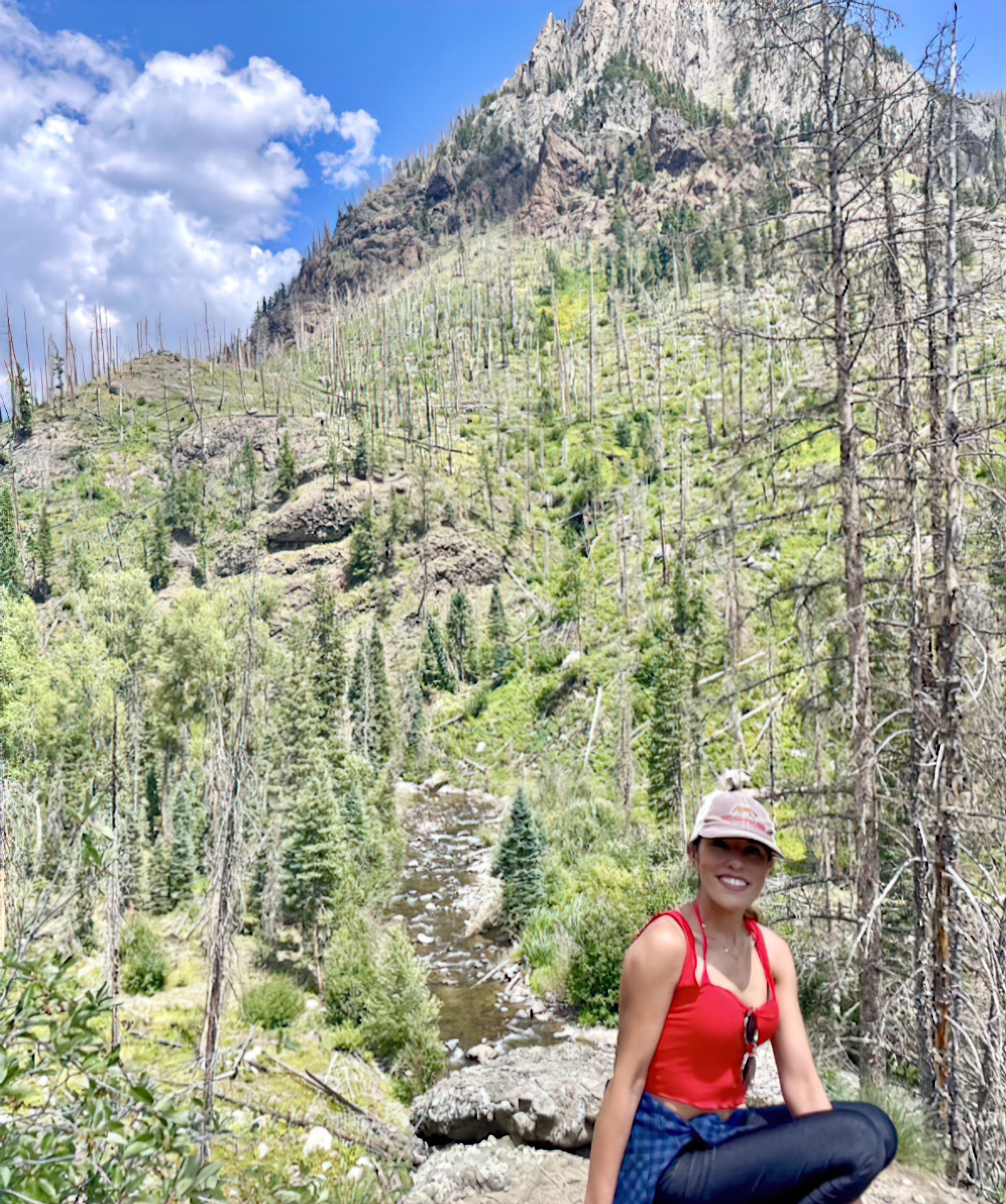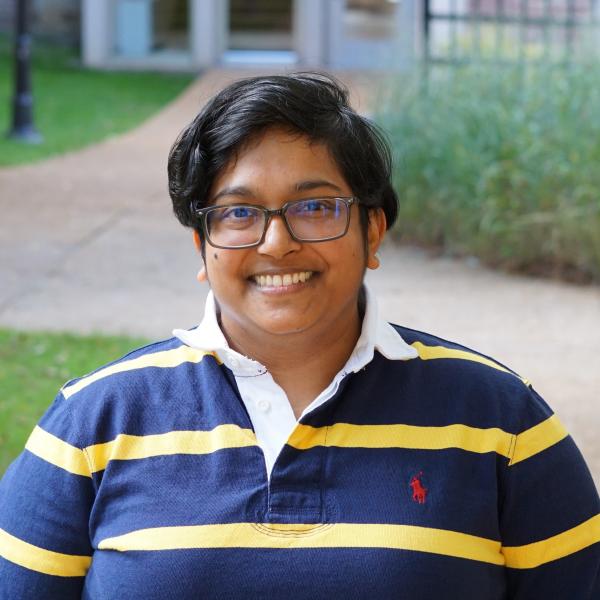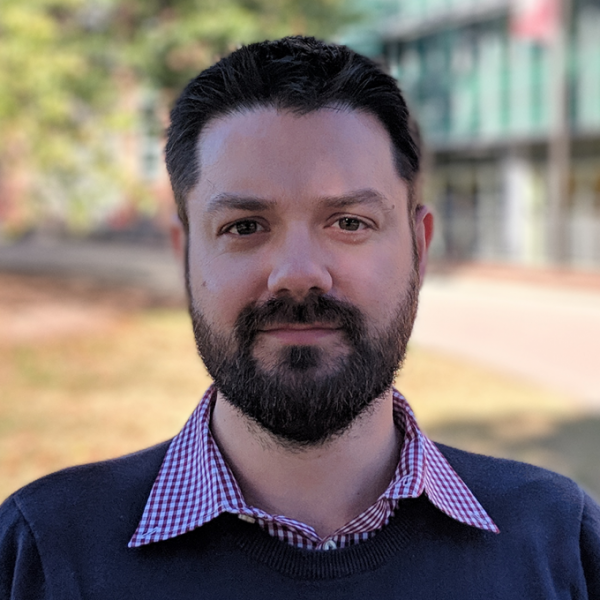Gaby Garcia, BA 2016, started her career as a field geologist and has since found her passion in environmental data analytics. “There’s a good reason why data analytics is such a hot field to be in right now – there is so much existing environmental data just waiting to be analyzed, and more data generated every day,” Garcia said.

After completing her degree in environmental earth sciences at WashU, Garcia went to work as an assistant geologist at the engineering firm Burns & McDonnell. That role gave her firsthand experience with groundwater monitoring and sampling; soil core sampling; and measuring key environmental parameters such as dissolved oxygen, pH, and specific conductivity. Though Garcia quickly realized she was more interested in analyzing data than gathering it, her work with the consulting and water quality industries was instrumental in clarifying her professional goals.
In 2018, Garcia enrolled in Duke University’s Nicholas School of the Environment, where she earned a master’s degree in environmental management, specializing in water resources management. At Duke, Garcia honed her skills in coding, statistical analysis, geographic information systems, and data analytics.
“Learning to code in R and Python and taking all the environmental data analytics courses I could allowed me to extract environmental data sets, clean them, analyze them, and visualize statistical patterns and trends,” Garcia said. “I really enjoyed all my work with multivariate environmental data analyses and decided I wanted a career that allowed me to continue doing that. I saw a real opportunity where I could make a difference in analyzing water data!”
While still in graduate school, Garcia interned on a collaboration between the Utah Department of Water Resources (UDWRE) and the Western States Water Council (WSWC), a government cooperative of 18 western states for the conservation and management of water resources. As a hydroinformatics intern, Garcia conducted database management, supporting access to regional water data related to water supply, demand, and allocation. She also developed new database features, including a time-enabled water budget that displayed consumptive water use, surface water use, and groundwater withdrawals over time by county.
After earning her master’s degree, Garcia briefly worked as a coder for the Consortium of Universities for the Advancement of Hydrologic Science, Inc. (CUAHSI) until landing her current position as a water data science consultant for KISTERS, a global technology firm specializing in long-term management of water and other industries. At KISTERS, Garcia applies her specialized skills to problems she really cares about solving.
“I love my current job because I get to work with many international and domestic clients – including several western water clients – using KISTERS’s point-and-click data software (WISKI). It’s a watershed database and data analytics solution for clients to import, store, search, retrieve, calculate, validate, and report on water quality data as well as associated metadata,” Garcia explained.
She is particularly excited about an ongoing project with the British Columbia Ministry of Environment (BCMOE) in Canada. The effort involves importing a massive amount of data into a demo WISKI system, and then debugging and refining the system into a final product that will drastically improve BCMOE’s ability to monitor and improve water quality for millions of residents. Similar systems will be implemented for clients involved with environmental conservation and natural resources across Canada.
In addition to making a real impact in how her clients manage water resources, Garcia also looks forward to using more R and Python for future clients, including Santa Cruz County and San Diego County in California, among others.
“I hope I can inspire other women, especially women of color, to enter the environmental field and learn to code and analyze environmental data,” Garcia said.



